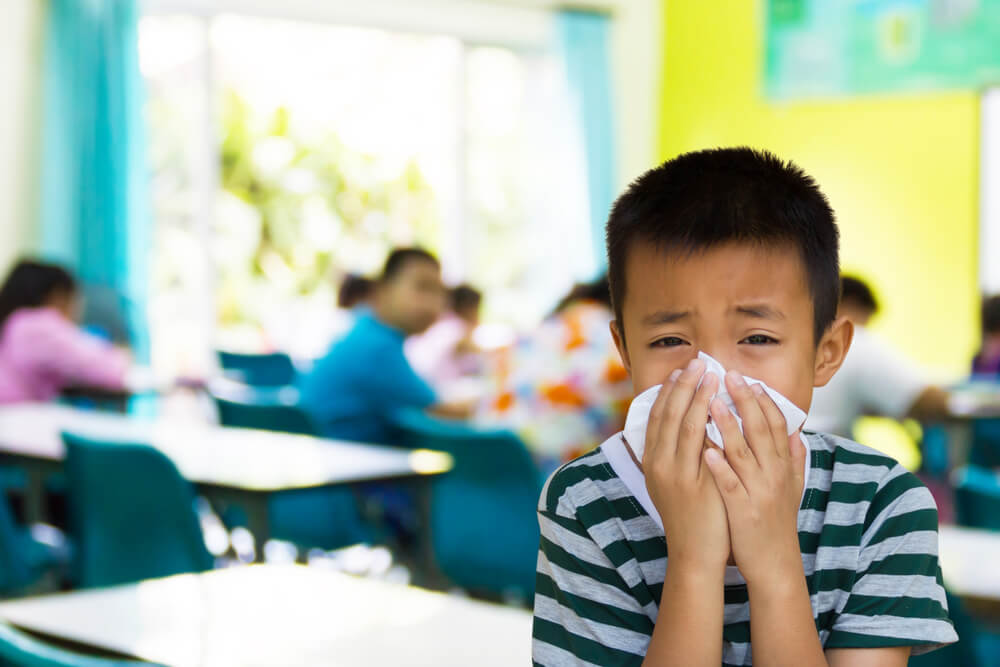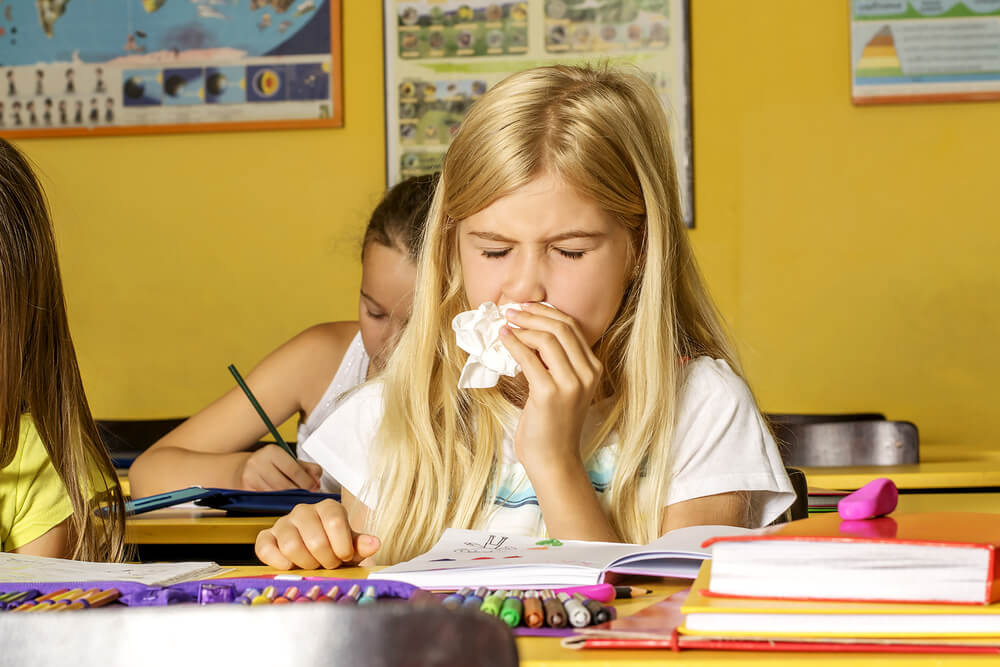As the back-to-school season unfolds, the excitement of new beginnings is often accompanied by a concern that’s all too familiar for parents: the persistent challenge of kids in school falling prey to various illnesses. The collective experience of sickness in schools can be a source of frustration and worry for parents wondering, “Why do my kids keep getting sick?” In this comprehensive guide, the expert team at PEMC Of Florida will explore the common reasons behind the prevalence of illness among kids in school and provide practical insights on how to prevent sickness, ensuring a healthier and more resilient school year for your children.
Understanding the Dynamics of Kids in School

The phenomenon of sickness in schools is not uncommon, given the close quarters and frequent interactions among students. It’s not unusual for children to be more susceptible to infections and viruses due to their developing immune systems. Understanding these dynamics is the first step in addressing the perennial question: “Why is my child always sick?” Beyond the immediate concern for their well-being, frequent illnesses can impact a child’s academic performance and disrupt the family routine.
Common Culprits and How to Prevent Sickness
Hand Hygiene Education
One of the primary vectors for the spread of germs in schools is direct contact. Teaching kids proper handwashing techniques is a simple yet effective way to prevent sickness. Encourage them to wash their hands regularly, especially before meals and after using the restroom. Consider providing hand sanitizer for moments when soap and water are not readily available.
Furthermore, instilling the habit of avoiding face touching, especially the eyes, nose, and mouth, can significantly reduce the risk of infection. Remind children that these areas are entry points for germs, and maintaining awareness can be a powerful preventive measure. Additionally, incorporating lessons on respiratory hygiene, such as coughing or sneezing into the elbow or a tissue, can complement handwashing practices, creating a comprehensive defense against the transmission of germs in the school environment. As a final layer of protection, consider collaborating with the school to implement hand hygiene education programs that reinforce these practices and foster a collective commitment to maintaining a healthy and safe learning environment.
Immunizations and Health Check-ups
Keeping up with recommended vaccinations and scheduling regular health check-ups are crucial components of preventive healthcare. Ensure that your child’s immunizations are up-to-date, as they provide a robust defense against many contagious diseases commonly found in schools.
Nutrition and Hydration
A well-balanced diet contributes significantly to a strong immune system. Provide your children with nutritious meals and snacks rich in vitamins and minerals. Hydration is equally important, as it helps the body flush out toxins. Encourage your kids to drink plenty of water throughout the day.
Moreover, emphasizing the importance of diverse food choices ensures that your children receive a spectrum of nutrients essential for their overall well-being. Incorporate a colorful array of fruits, vegetables, whole grains, and lean proteins into their meals to promote optimal health. In addition to a balanced diet, fostering healthy eating habits at an early age can instill a foundation for lifelong wellness, equipping your children with the tools they need to make nutritious choices independently as they grow.
Adequate Sleep
Sufficient and quality sleep is essential for a child’s overall health and immune function. Establish a consistent bedtime routine and ensure that your child gets the recommended amount of sleep for their age group. A well-rested body is better equipped to fend off infections.
Teach Respiratory Hygiene
Educate your kids about the importance of covering their mouths and noses when sneezing or coughing. Encourage the use of tissues or the elbow of their arm rather than their hands. This simple practice can significantly reduce the transmission of airborne viruses.
Why Do My Kids Keep Getting Sick?
The recurrence of illnesses among kids in school can be attributed to a combination of factors. The close proximity of students, shared spaces, and developing immune systems all contribute to the challenge. Additionally, exposure to a variety of germs in a school environment can lead to recurrent infections, especially during the cold and flu seasons. The question “Why do my kids keep getting sick?” prompts a proactive exploration of strategies to break the cycle and fortify your child’s defenses.
Strategies for a Healthier School Year
Promote a Culture of Wellness
Engage with the school community to promote a culture of wellness. Encourage the implementation of health and hygiene programs, and collaborate with teachers and administrators to create an environment that prioritizes the well-being of all students.
Participate in parent-teacher meetings and school events to actively contribute to the dialogue surrounding student health. Advocate for the inclusion of health education in the curriculum, emphasizing the long-term benefits of cultivating healthy habits. By building a strong partnership with the school community, you play a vital role in shaping a holistic approach to wellness that extends beyond individual efforts to create a supportive and health-conscious educational environment for all students.
Regular Cleaning and Disinfection
Advocate for regular cleaning and disinfection practices within the school premises. High-touch surfaces, such as doorknobs, desks, and shared equipment, should be cleaned regularly to minimize the spread of germs.
Encourage the establishment of clear protocols for custodial staff to ensure thorough and consistent cleaning practices. Regular communication with school administrators about the importance of maintaining a clean environment can contribute to the overall well-being of students, creating a foundation for a healthier and more resilient school community.
Encourage Sick Day Policies
Support and adhere to sick day policies established by the school. Keeping an unwell child at home not only aids their recovery but also prevents the potential spread of illness to other students.
Open Communication with School Staff
Maintain open communication with teachers and school staff regarding your child’s health. Alert them to any pre-existing conditions or concerns, fostering a collaborative approach to keeping your child healthy while at school.
Boosting Immunity

Consider incorporating immunity-boosting supplements into your child’s diet, especially during peak illness seasons. Consult with a healthcare professional to determine suitable options based on your child’s age and health status.
However, it’s crucial to approach supplements cautiously and seek personalized advice from a healthcare professional to ensure they align with your child’s specific health needs. Factors such as allergies, existing medical conditions, and medication interactions should be considered in determining the most suitable supplements. A healthcare provider can provide tailored guidance, helping you make informed decisions to support your child’s immune system effectively.
Conclusion
In navigating the challenges posed by sickness in schools, the key lies in a proactive and holistic approach. By understanding the dynamics of kids in school, identifying the common culprits behind frequent illnesses, and implementing practical strategies on how to prevent sickness, parents can contribute significantly to a healthier school environment. Remember that each child is unique, and finding the right balance of preventive measures may require some experimentation. Through collaboration with schools, open communication, and a commitment to fostering a culture of wellness, we can collectively create a robust defense against back-to-school sickness and ensure a thriving academic year for our children.


